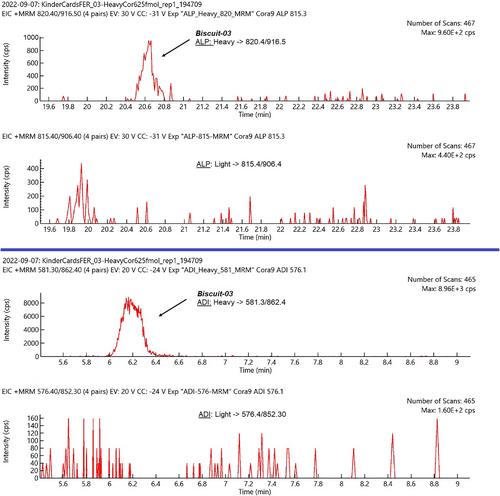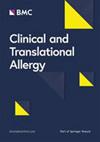The frequency and severity of reactions in food-allergic consumers exposed to unintentional food allergen contamination during production is unknown. To warn allergic consumers, it has been suggested for pre-packaged foods to be precautionary labelled when the food allergen contamination may exceed the amount to which 1%–5% of the population could react (ED01–ED05). ED01 for hazelnut and milk have been estimated at 0.1 and 0.2 mg, respectively, by the Voluntary Incidental Trace Allergen Labelling (VITAL) initiative. The respective reference doses recommended by the FAO/WHO Codex consultation are 3 and 2 mg. We evaluated the reactivity to potential traces of milk and hazelnut allergens in allergen-free pre-packaged products by children affected by severe allergies to milk and hazelnuts.
Oral Food Challenges with commercially available hazelnut-free wafer biscuits and milk-free chocolate pralines were administered to patients with severe food allergies to hazelnut and cow's milk, respectively. Contamination levels of milk or hazelnut allergens were measured using chromatographic separation interfaced with triple quadrupole mass spectrometry.
No hazelnut allergic patient showed allergic reactions to exposure to biscuits, nor any milk allergic patient displayed allergic reactions to the dark chocolate praline. While no hazelnut trace was detected in biscuits, the praline was found to be contaminated by milk at concentrations ranging between 8 and 35 mg total protein/kg food. In our dose model, these amounts exceeded 1.5–10 times the VITAL ED01 and reached the threshold suggested by the FAO/WHO Codex consultation.
Upon the consumption of food products available on the market, many patients with severe food allergies tolerate significantly higher doses of allergen than reference doses indicated in the VITAL system used for precautionary allergen labelling. These doses support the safety of the FAO/WHO recommended reference doses.



